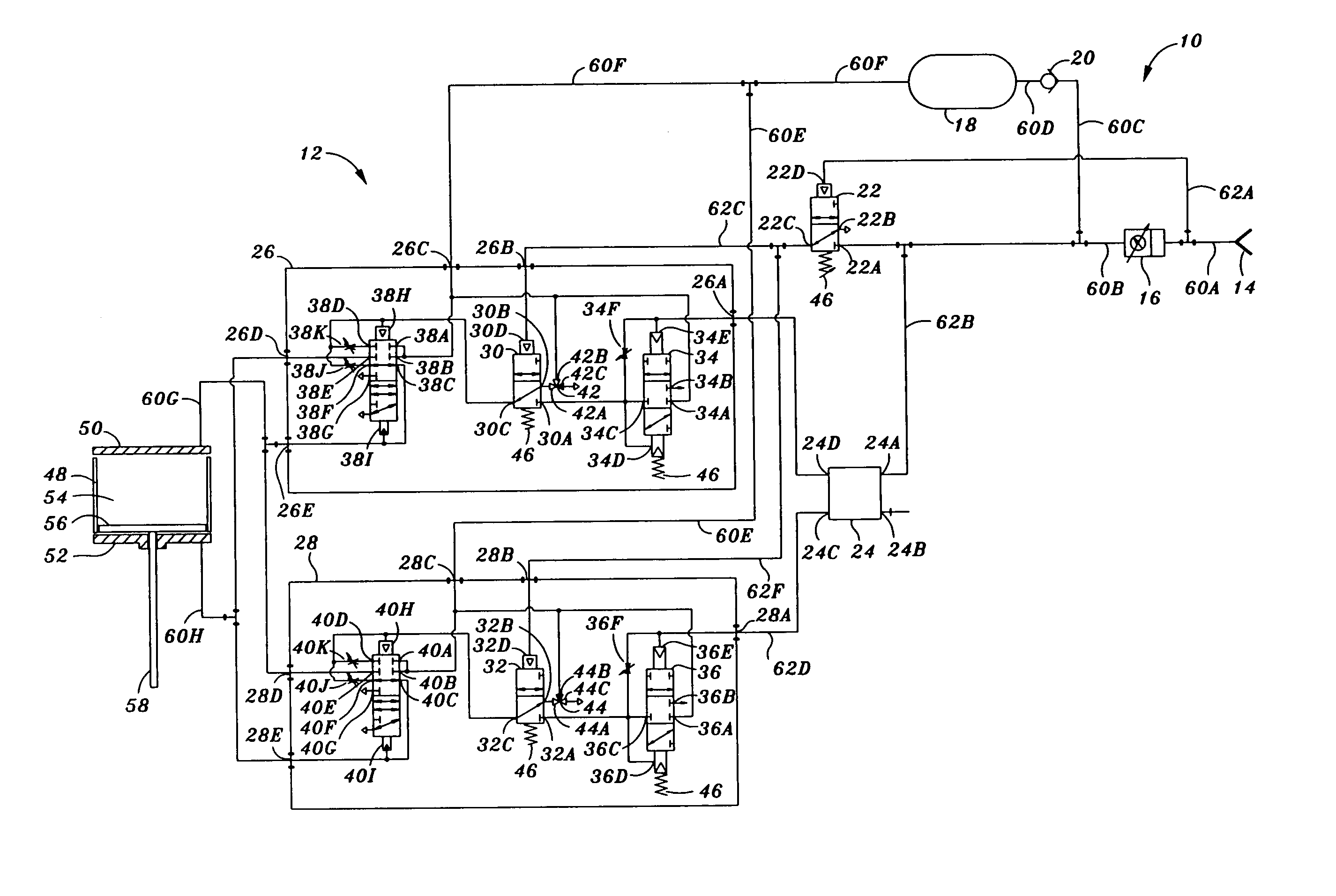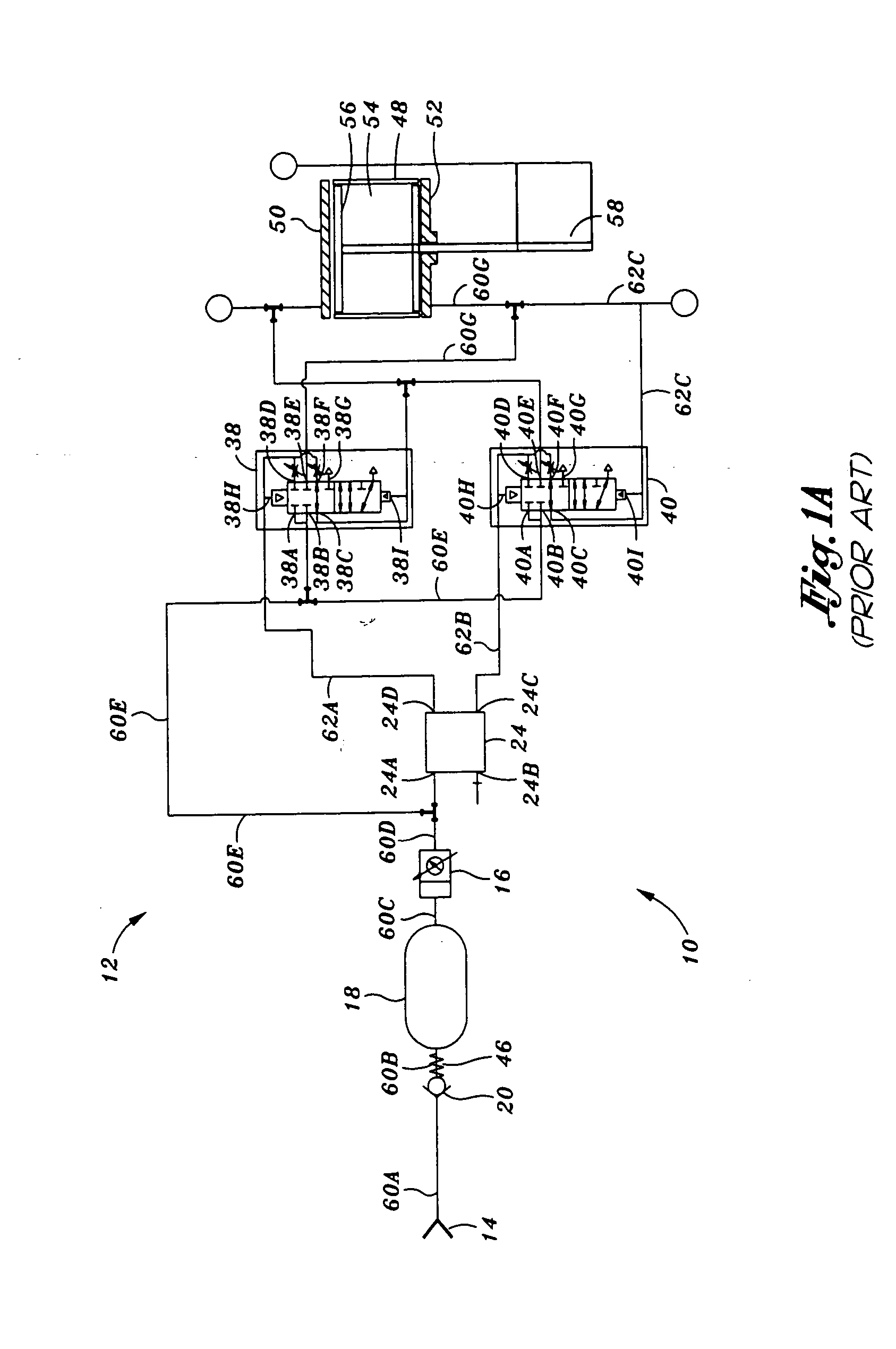Three-way pneumatic commutator and volume booster
a commutator and volume technology, applied in the direction of fluid couplings, servomotor components, servomotors, etc., can solve the problems of inability to supply and exhaust a sufficient volume of compressed air to the actuator, inability of pneumatic circuits with large-volume actuators to achieve a quick stroking speed of the piston, and inability of pneumatic circuits operating with large-volume actuators to energize derivative boosters. to achieve the effect of reducing the length of conn
- Summary
- Abstract
- Description
- Claims
- Application Information
AI Technical Summary
Benefits of technology
Problems solved by technology
Method used
Image
Examples
first embodiment
[0053] In the pneumatic circuit 12 of FIG. 2, the second internal plug 44 is arranged such that the compressed air may exhaust the second end 52 through the second commutator 32 through ways 32A-32C upon a loss of pressurization within the pneumatic circuit 12. Simultaneously, first internal plug 42 is arranged such that the residual compressed air from the volume tank 18 may be directed into the first end 50 through the first commutator 30 through ways 30A-30B. When the first and second internal plugs 42, 44 are arranged in such a manner, the piston 56 may be extended into a fail close position upon a loss of pressurization.
[0054] Conversely, the first internal plug 42 may arranged such that the compressed air may exhaust from the first end 50 through the first commutator 30 through ways 30A-30C upon a loss of pressurization within the pneumatic circuit 12 while the second internal plug 44 is arranged such that the residual compressed air from the volume tank 18 may be directed int...
third embodiment
[0062] In FIG. 4, the first and second volume boosters 34, 36 may further include respective second adjustable restrictions 34H, 36H and respective second check valves 34I, 36I fluidly connected in parallel to the first adjustable restrictions 34F, 36F. The second adjustable restrictions 34H, 36H and second check valves 34I, 36I are configured to collectively regulate the point at which the first and second volume boosters 34, 36 are energized. The second check valve 34I of the first volume booster 34 is oriented to block the flow of compressed air away from the pilot 34E. The second check valve 36I of the second volume booster 36 is oriented to block the flow of compressed air away from the pilot 36E.
[0063] The combination of the first adjustable restriction 34F with the first check valve 34G provides the capability to separately regulate the point at which the first volume booster 34 toggles into the supply mode. Similarly, the combination of the second adjustable restriction 34H ...
PUM
 Login to View More
Login to View More Abstract
Description
Claims
Application Information
 Login to View More
Login to View More - R&D
- Intellectual Property
- Life Sciences
- Materials
- Tech Scout
- Unparalleled Data Quality
- Higher Quality Content
- 60% Fewer Hallucinations
Browse by: Latest US Patents, China's latest patents, Technical Efficacy Thesaurus, Application Domain, Technology Topic, Popular Technical Reports.
© 2025 PatSnap. All rights reserved.Legal|Privacy policy|Modern Slavery Act Transparency Statement|Sitemap|About US| Contact US: help@patsnap.com



